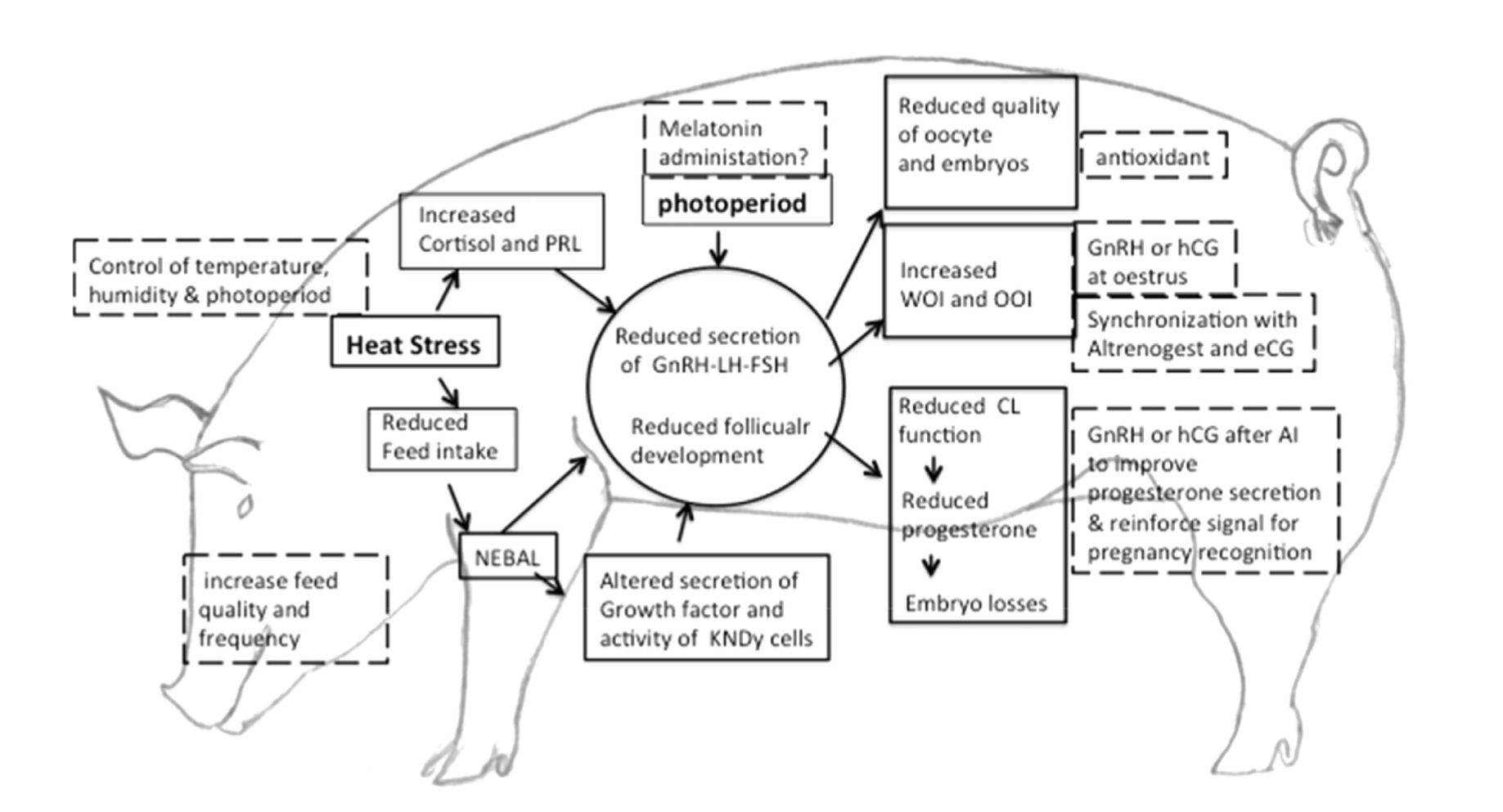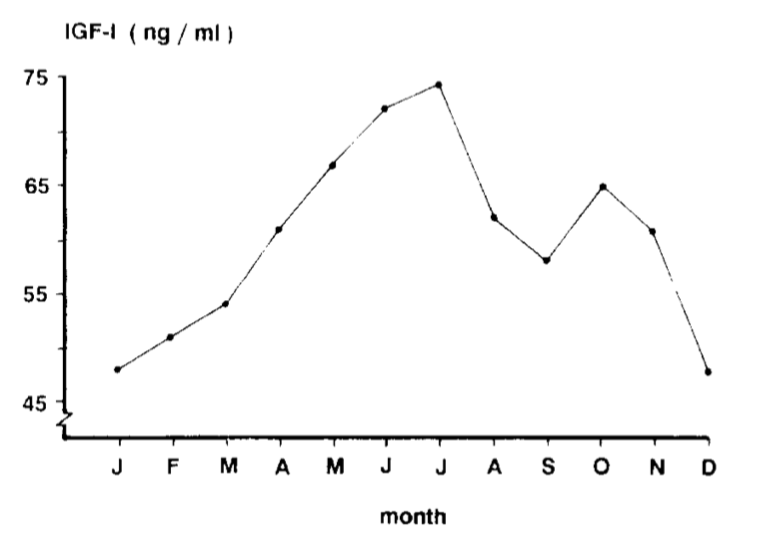Seasonal infertility: the cause, the cost and can you prevent it from happening?
Dear veterinarian and fertility specialist,
Here’s a brief explanation of what causes seasonal infertility in sows, the costs and why Ardol is convinced that Lianol® has an added value during this period of reduced fertility.
The cause of seasonal infertility
Research* (De Rensis et al. 2017, Auvigne et al. 2010) shows the sow to be responsible for the decline in fertility. The decrease in day length (mid-August to the end of October) appears to give rise to the problem, with heat stress as a possible reinforcing factor (see fig. 1).

Fig1: Different hypotheses in the development of seasonal infertility (De Rensis et al. 2017)
The ultimate cause, according to the study*, is a decrease in the secretion of GnRH, FSH and LH and consequently an inferior follicle development. (See fig. 1) Therefore, the goal must be to stimulate the secretion of these hormones in order to produce healthy follicles that can sustain a successful gestation.
On one hand, this is achieved by maintaining a high and constant light regime throughout the entire farm. On the other by stimulating the insulin and IGF-1 levels in the blood. These two hormones stimulate GnRH release. GnRH subsequently stimulates the production of FSH and LH.
Lianol® Ferti as a preventive action against seasonal infertility
Even in healthy sows, the IGF-1 level decreases with the passing of the seasons. (see Fig. 2) However, if the animals previously have suffered from heat stress, their deteriorated physical condition will cause an even greater decrease in insulin and IGF-1 levels in the sows that need to be inseminated.

Fig. 2: annual pattern of IGF-1 in the blood plasma of the sow (Landrace Germany) (R. Claus and U. Weiler 1994)
Sufficient flushing for a good recovery of the insulin level and supplementation with Lianol Ferti® for the recovery of the IGF-1 level can therefore make a big difference in the fall. Maintaining a high feeding schedule at the beginning of gestation is also a must.
How much does the seasonal infertility cost to a pig farmer
The study* calculated that as a result of seasonal infertility, fertility decreases on average by 2.8%, but that 25% of all farms have a decrease in fertility of over 7%. (Auvigne et al. 2010)
According to Wageningen University, the financial value of 1% more or less farrowing percentage equals to € 16.5 / sow present / year. The seasonal infertility happens for about two months, so the average cost is almost € 8 per sow and for 25% of the farms it costs at least € 20 per sow present.
The research also showed that in years with hot summers, the problem of seasonal infertility was even greater. Global warming will therefore only increase this problem in the future.
With best regards,
The Ardol team
* If you have any questions about the sources used, you can always contact us at Info@ardol.nl
If you appreciate the content of our newsletter and if you or your practice wish to communicate this information in the future to your customers under the name of your practice, it can be discussed.
